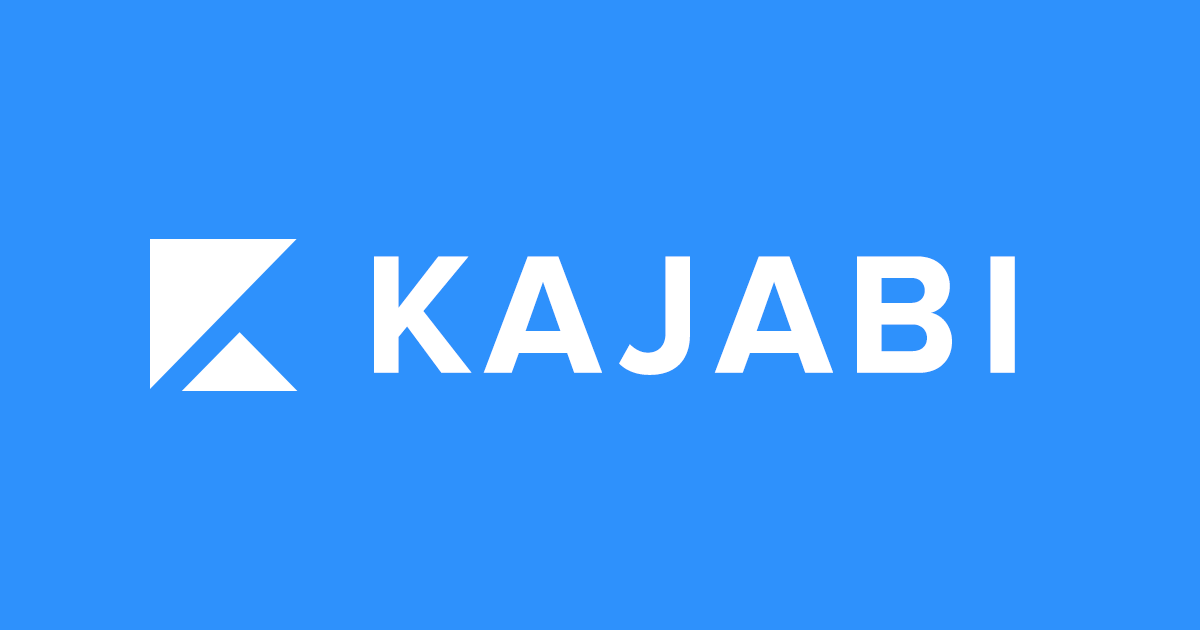Are you looking for a Kajabi review that is concise? You’ve found the right place if you are just starting to explore the world of course creation but have trouble choosing the right platform for your goals.
I’ve been delving my hands into creating and selling courses based on the content I’ve had experience with, and I’ve even made money from doing so. The process can be a struggle, but the payoff is worth it. This includes the preparation of materials that can be put out to the public, as well as other things like sales. However, it is equally important to consider the software/program.
Kajabi is the best platform to promote my courses. I have tried a few platforms since I started. Today, I will be discussing what it is, how it works and my honest opinion after having used it for a while. Let’s begin!

For those of you who prefer a more visual experience, here is a video review from Legit Marketing Reviews’ YouTube channel. To get a comprehensive overview of Kajabi, you may still want to check out our article below.
What is Kajabi? Kajabi Blog Versus WordPress
Kajabi, an online course-building platform, is well-known for being a one-stop shop and the place to go for all your course business needs. Kajabi’s outstanding range of tools and features makes it easy to build and sell content for profit, no matter what your goals or strengths.
With Kajabi, you get to create courses based on your possessed skills or profession, but, since it’s an all-in-one place, there is more than it has to offer. More than the traditional course, you can also create an exclusive membership subscription, host an intimate coaching program, run a podcast, and even send out newsletter e-mails to your customers with its state-of-the-art automation features.
Kajabi is easy to use. It’s remarkable that a platform with so many features and knowledge is still easy to use. I’ve gone to Kajabi plenty of times now, and I can say that I appreciate that I didn’t have to learn any advanced technical jargon just to use its features. Kajabi does all the coding for you. This saves you both time and effort.
Kajabi allows users to create websites that host their course content. This is something not all course builders have. As there is a lot of potential in selling courses, it also offers a slew of marketing and sales tools to promote them to a wider audience. This includes checkouts and payments, sales funnels, detailed analytics, and even integrations – all very useful, especially if you sell your content as products for a living.
It doesn’t stop there. Aside from making content and selling them efficiently, Kajabi has a rich library of resources and support that you can always fall back into anytime a problem arises. With a huge database of help articles and videos, on-demand training courses with Kajabi University, and a budding community of Kajabi Hero entrepreneurs, you may get to learn a lot of valuable information and even improve how you earn to the max.
It’s easy to see why Kajabi is a favorite among content entrepreneurs. You might not believe it yet. This Trustpilot rating may convince you. Take a look at the reviews to see how many people are enjoying it. Kajabi Blog Versus WordPress
Since its founding more than a decade ago, Kajabi has helped build more than 100k businesses, oversaw the creation of 300k+ products from courses to newsletters, and has earned a whopping $4 billion in sales. While we can appreciate how well-loved this platform is when it comes to course-building, we can’t ignore some of its lapses, such as its pricey plans and lack of other crucial features such as certifications and other advanced tools.
Kajabi in a Nutshell – How it Works
Since I found this platform, I have never been happier to have Kajabi be my place to promote the skills I already know and sell them to others who are interested in learning. It’s great to learn more about it.

> > Click Here to Check Out Kajabi < <
Essentially, with Kajabi, you get to do a wide variety of ways:
- You can create courses by either building them up from its offering of templates or doing it all from scratch;
- You can create any type of website you like to display your content. It could be your homepage/store, your course content landing page, or a space for customers to visit. Kajabi Blog Versus WordPress
- You can sell any product, whether it’s free, a bonus, or a subscription.
- Make use of its range of marketing, reporting, and sales functions to acquire a wider reach from sales funnel blueprints to affiliates.
Kajabi can be used to create products and sell them in a unique platform. Or to simply host other content and solutions on the website.
I’ve personally used Kajabi for the first and primary reason why it was established in the first place – to make, host, and sell content that I’ve always been confident in putting. Its impressive capabilities have made it a top platform for sharing new information with people from all walks.
Kajabi’s Pricing Plan
Kajabi currently offers three pricing options, namely:
- The Basic Plan, which costs as low as $119/month (billed annually from here onward),
- The Growth Plan, priced starting at $159/month, and
- The Pro Plan, which costs $319/month.
The Basic plan allows you to create three products and three sales funnels. You can also create unlimited landing pages, marketing e-mails and gain up to 1000 customers.
The Growth tier lets you explore mostly the same features as the previous one, plus upgrades such as 10,000 customers, ten admin users for one website, advanced automations, the Kajabi affiliate program, and the ability to remove all Kajabi branding from your site and courses.
Kajabi Pro continues to expand the features of the site with access the code editor. There are also level-up upgrades such as an allowance for 100 products or 100 funnels, 20,000 customers and three websites.
Unfortunately, it does not currently offer a free plan. Kajabi offers a 14-day free trial on all of its plans. If you are interested in giving it a try, this is the time to do so.
A common criticism Kajabi has received is how expensive the price range is compared to other platforms, as some offer their version of premium plans starting at a quarter or even half the price of Kajabi’s Basic tier. Kajabi’s premium plans can seem a little too expensive for those who have used them before. But based on my experience, I think I kind of empathize with the platform knowing that it went all out with its services and user experience, so it makes sense why the pricing was this way.
Kajabi’s Features – A Comprehensive Breakdown
Kajabi provides a one-stop shop for all your content and business needs. And by that, I mean there’s more than what you can expect. Without further ado, let’s take a look at the platform’s key features and break each of them down one by one, starting with its course-creation service.
Course Management and Creation
Kajabi is one of the many platforms that specialize on educational entrepreneurship. But the task of course building isn’t always so easy to the point where you could take it for granted. To spread content that has been hard worked to create, it takes weeks of careful brainstorming. Kajabi Blog Versus WordPress

> > Click Here to Check Out Kajabi < <
Kajabi understands the struggle many creators often face, so that’s why it took extra steps to ensure that everything goes according to plan, all while easing the difficulties most individuals can relate to. Kajabi provides a space for its users where they can create powerful courses while also having all the tools they need to expand their reach. This includes how to get more subscribers using convincing teasers and sharing what they know with unique ways to keep them coming back.
Courses as Products
According to Kajabi, products can refer to any digital course that you are bound to take. It can also refer to other forms that may, or may not, contain the usual course content. On one hand, some similar platforms refer to those products as, simply, courses, given their more educational nature. Kajabi, on the other, knows how important the term implies – It’s not just the varying amount of knowledge put into a feasible outcome that matters, but also how well it sells to audiences everywhere.
As of this writing, Kajabi offers seven different types of products. Each product can be used as a template or blueprint that you can immediately generate and modify. An Online Course is one of these. You can create as many lessons, media files and information as you like. Another is a Blank Blueprint, where you can start from scratch and add anything you want.
Kajabi also offers other product blueprints, including the blank template and main course.
- Mini-courses – for whenever you want to produce a quick, easy-to-digest course as a freebie or bonus, something to build extra value for your brand and anticipation for what’s to come
- Evergreen Training – also known as Drip Courses, gives you a strategic framework that sees course lessons released periodically, preferably over a series of weeks
- Coaching Program – designed by Wall Street bestselling author Brendan Burchard, lets you create an intimate 12-week program as a means to enhance your skills to the next level
- Membership – This is for when all of your content needs are met in one platform that your subscribers can access at any time.
- For when you want to make a community where your members can share their thoughts and ideas about your courses, and other matters.
The Course Building Process
After selecting your preferred product blueprint, it’s now time to build your course by adding whatever needs to be added. Whether you do it from scratch or tailor it from an existing template, the next best thing you must do is incorporate all the knowledge and skills you’ve collected through the years into an information-enriched course.
As you navigate through Kajabi’s course builder page, you’ll get to explore a multitude of customization and editing options. You can add the title and sections of the course to Kajabi’s course builder page, upload a poster or thumbnail that matches your goals, and adjust the flow of your outline.
Additionally, you may upload downloadable PDFs, attach media files, utilize bulk uploads powered by cloud storage software, and add e-mail automations, among other things. If you discover further in Kajabi’s course builder, you may also try out cloning sections and adding announcements within the course to keep your students engaged within your course.
The Course Framework
The sections of a Kajabi course are called categories. Lessons placed under these categories are called posts. Each category under a product may be a placeholder for distinct subtopics that are adjacent to the main topic. Similar applies to posts. The subtopics under the primary topic are replaced by lessons under each one.
Apart from the categories and posts, Kajabi also allows you to add subcategories under the former – this is quite helpful, especially if you have a huge curriculum in mind and you want to dissect it into digestible parts for your students to understand better.

> > Click Here to Check Out Kajabi < <
Kajabi allows you to choose whether the product’s contents are released periodically or simultaneously. You can choose to release the content of Drip Courses within a few days, or even one week, depending on how long you want. You may also opt for the Lock feature to block students’ access to any category unless they finish a prerequisite.
Explore Kajabi’s Course Players
Every course needs a place that allows them to be seen, clicked, and taken further. It should also be attractive. Kajabi’s Course Player feature provides a platform that allows you to store and display your products to students who have subscribed. You can customize the courses and the course player to create a better learning experience.
Kajabi offers over 10 themes for default course players. You may find that most platforms only offer three themes, or one in-store. Compare that with Kajabi’s wider range, all you’ll notice the difference right away. What I particularly like about it is that there are more options to explore – Kajabi surely may be quite too pricey to afford for some, but we can at least appreciate how much it gives to offer us this privilege! Kajabi Blog Versus WordPress
Choose any of the course player themes, and you’ll be given the chance to customize it however you want it to look, from the images and colors down to the fonts and graphics. Kajabi values convenience above all else, so you don’t have to know how to code to make your course player look great. You can upload your customized theme if you are more proficient in web design.
Instructor-Student Interactions and Assessments
Communication is crucial to student success and an opportunity to earn the trust of the instructor. Kajabi offers many ways for members and you to interact. One of them is the Community feature, which you may choose to offer as a standalone product or part of the membership package. It works like a social media site where subscribers can post, view who’s online, comment on lessons, and share them. You can manage, hide or disable comments for every lesson.
A surefire way to keep your members engaged is through assessments, which involves creating quizzes based on the lessons you’ve taught them to stimulate their minds. There are different types of questions that you may use to create an assessment, from multiple-choice questions to paragraph fill-ins. To encourage students to do better, you may set a passing score. If not, don’t give them any pressure.
As great as Kajabi’s assessment feature may seem, it’s a bit apparent that it may fall short a bit when it comes to delivery. Compared to other course-building services, Kajabi seems to be one of the few that don’t offer native certification tools. I don’t mind about it as much, but for those who like to give out certificates, you may be out of luck in this one. This one asset would have been a great way to reward students for their accomplishments, such as finishing the course.
Website Building Tools
Kajabi’s ability to provide powerful, yet easy tools for creating websites is another important aspect. Kajabi has a built-in website builder that allows you to create and customize a fully-functioning website of your own without the need to rely on external providers. The platform offers free hosting for all plans.
Although the Kajabi website builder can be very easy to use, there are times when it can be confusing. The drag-and-drop techniques apply to the editor, but it’s not what you would expect – instead of the usual “drag the blocks/widgets from the menu and drop them into the workspace,” you just drag to rearrange sections of a page from the top to bottom on the left-hand menu, and the workspace, once updated, will reflect the change.
Website Design and Customization
Kajabi’s website creator allows you to choose from 14 themes (eight regular themes and six heritage themes) along with a complete set of pages. Once you’ve found the theme of choice for your website, you may go ahead and customize it however you want based on your flow or vision. Kajabi Blog Versus WordPress
You may do so by adding or deleting each page’s building blocks, which comprise many types of content such as text and font styles, media widgets, pricing, offers, FAQs, and testimonials. You may even incorporate countdown widgets, fill-in forms, social media content, and even call-to-action buttons to catch the audience’s attention.
The customization doesn’t stop there with building blocks, as Kajabi offers a few alternative ways to personalize your website. You can adjust the theme settings tab to make your website more personal or fit the needs of your business. With it, you may change the site’s default typography, icons, color scheme, or even the background of a whole page to a different color or profile.
Another is simply uploading a fully customized theme that’s not part of Kajabi’s library, just like you would with the Course Player. Kajabi allows you to connect your custom domain to the site you have just created. You may have an already-created default domain on the platform. However, if you want to maximize your business without Kajabi branding you can connect to a domain purchased through a third-party platform such as GoDaddy.
The Types of Pages for Your Website
A common Kajabi theme is made up of pages that are linked to each other as soon as you click them. These pages include the home page that explains the basics of your business, the library where you can store all your Kajabi content, and a place where customers can buy your products.

> > Click Here to Check Out Kajabi < <
For every Kajabi-optimized theme, you have the option to delete or add any page you like. There are more page options for you to explore other than home and landing pages, such as a log-in page, thank-you page, 404 error screen, portfolio, FAQ, policies, opt-in pages, and a coming soon page. If you happen to have blogging as part of your specialties or skills, there is a separate blogging page that lets you compile your published posts into an archive that readers can look into at any time.
Blogging Capabilities
Kajabi’s built-in blogging function allows you to publish posts to your blog and make them visible to everyone. We all know that blogs can be used to post articles related to a variety of topics, even those that may be adjacent to one’s current skill set, right? Well, Kajabi’s version has much of the same purpose.
If you wish to give updates on the products or content you plan to release in the future, share a handful of tips based on what you’ve learned so far in your chosen path as a means to inspire others, or offer search engine-optimized articles to boost your traffic in any way, you may fancy yourself with Kajabi’s blogging tools. Kajabi Blog Versus WordPress
It works in the same way as other well-recognized blogging platforms like WordPress. You simply type the words you want, the media files and hyperlinks you want to share and the tags you feel are more appropriate for your post. You can choose to publish the post immediately or schedule it to be published later. Although Kajabi’s blogging tool may not be as dynamic as WordPress’s, it is functional enough to be used by anyone.
Marketing, Sales, and CRM
Your brand’s reputation can be affected by how you market your products. A well-designed marketing strategy will increase your chances of creating revenue and clout. Otherwise, a poorly-organized one may lead to low to zero turnouts. Kajabi provides a comprehensive suite of sales and marketing tools that will help you maximize your product’s potential and make it easy to sell. It is also surprising to me that it outperforms other top competitors in this field.
Convenient Sales Pipelines
A well-designed funnel can lead to greater opportunities for your company. However, designing one can be difficult, especially if it’s not something you are very familiar with. Kajabi’s pre-made, well-designed pipelines are ready to use and customizable. It houses a total of 14 templates (seven for default templates, the other seven for legacy ones).
Each one is tailored to your product promotion needs. You may give away freebies to your potential subscribers to keep them interested, show your courses in a way they can be tempted to purchase, coach them, or hold a Zoom meeting. The sales pipeline blueprints have been a huge help in increasing traffic to my content and generating leads.
As with some popular course platforms that have this feature, Kajabi’s collection sales pipelines are convenient and straightforward, plus it requires zero expert skills to get things right as the blueprint is automatically laid out for you. Kajabi’s sales funnel includes cards that contain pages, automations and sequences that will be welcomed by your customers.
Marketing by E-mail and Automations
E-mail marketing is a reliable strategy for businesses of any size. It can be used to promote new releases by musicians or to update your customers about new and current items at your favorite retailers. This is also true for courses and other learning material – Kajabi’s integrated e-mail marketing function helps to keep your customers and members highly engaged with what you have released.
You might be interested in two types of e mail campaigns: email broadcasts, which you can use to send one email to your subscribers about your courses (like a newsletter) and sequences that you create messages based on user activity using automations. It may seem familiar to some, but it can be a time-saver for those who don’t know much about e-mail automations. Kajabi Blog Versus WordPress
Automations are generally designed to reduce the workload. In this instance, you won’t need to send e-mails manually as you can set them to correspond to student actions. Kajabi’s email sequencing feature allows you to create messages and choose the time they should be sent. You can also tag subscribers that meet certain conditions and put them into different categories.
You can create e-mails in Kajabi, as well as automations and campaigns. The platform has a variety of templates that you can choose and use, and its e-mail editor allows you to edit how you want it to look the same way you’d do with website pages – tweak the hierarchy of your building blocks from top to bottom, add sections, and, if you have an eye for design, switch up the color palette and upload images to further set the mood.

> > Click Here to Check Out Kajabi < <
CRM for Managing Members
Managing individuals who are subscribed to your courses can be a pain, and even more so if the provided platform for it is unstable. Thankfully, most course management services have functional CRM (customer relationship management) tools that they can rely on to keep your students on track, Kajabi included.
Kajabi’s CRM section, also known by its term People if you sign in, allows you to check on the activities of your members from afar. You may get to see who purchased any of your products or subscribed to your membership, track the progress if they’re doing well or not, see who’s been inactive for longer, and even go through a list of e-mail contacts that have been hard bounced for reasons such as an invalid domain.
You may also explore one of your students in full depth by checking their profile. This is where you see their lifecycle or how long they’ve purchased your course, as well as detailed info including the time and date of when they first signed in. Kajabi’s People can help you see who is performing poorly and give them feedback and, if needed, some freebies to get them on the right track.
Kajabi’s CRM features go beyond the People dashboard. Course assessments and affiliate management are included in the bundle. We’ve already talked about the former earlier in full detail, but we haven’t come across the latter yet, which is what we’re exactly about to do shortly.
Kajabi Affiliate Program
As a way of expanding its reach, a successful business can recruit affiliates. The Kajabi Affiliate Program is only available to Pro and Growth plan users. It provides them with a few resources to help transform their members into trusted affiliates for your brand. You simply need to convince your most active students to sign up for the program. They may also be eligible to receive a portion of your earnings.
With Kajabi Affiliates, not only could you get to build a stronger following. You could also have more chances of generating extra clicks and elevating the conversion rate of your content. This one might be useful if you are already a professional in your industry. You can track and manage your affiliates, and see how they are doing. Kajabi Blog Versus WordPress
You can send them links to share, track how many clicks they have, track potential sales and even kick one out if they aren’t satisfied. To encourage members to sign up and share announcements, you can create an affiliate onboarding page. This will allow you to generate links to any website, not just Kajabi.
Sales, Payments and Accurate Analytics
Many course management companies take a small percentage, too much, or even half of the profits you make from selling courses. Kajabi, meanwhile, makes sure that the money you earn goes straight into your pocket. Kajabi is my favorite platform because I can keep 100% of the revenue I make from selling my products. This gave me a tremendous morale boost, which I don’t get from other platforms.
While I can understand why they needed to make cuts to maintain their business model, it is a problem for edupreneurs who want to grow and are keen to improve. Kajabi offers a solution that will allow them to grow, despite their high price tag. Apart from the benefit of keeping all your earnings to yourself, you can also manage how you handle refunds. Kajabi doesn’t have to be strict about this, and allows its users to make their own decisions. They can let their members access their content even after they request a refund.
Kajabi provides native integrations to the payment gateways Stripe and PayPal. Because PayPal is a common method of online payment, Stripe handles credit and debit cards. You may have to pay service fees for the payment gateway that you use. Technically, your revenue would be deducted, but not significantly.
Do you want to get in-depth insight to improve your business? Kajabi’s analytics and reporting features may be just two of the numerous ways to achieve this. The analytics has ratings, charts, and graphs that clearly show how your courses are doing so far, with accuracy close to a T. Meanwhile, you can explore a list of reporting options to choose from and view, from net revenue and sales performance to website views and subscription metrics. All the data from these features can be printed and exported to other platforms. Kajabi Blog Versus WordPress
Customer Service and Support
It’s not just a rich array of features that make Kajabi stand out. It equally shines when it comes to customer support, which has amassed an overwhelmingly positive reception among many who have used the platform to make business.
For example, the hotlines for customer service are a reliable way for customers to get assistance immediately or for any questions. Kajabi’s vast library of learning materials can be used to help you if you are too shy to ask. We have a lot of useful stuff to look through. Let’s go over each one.
On-demand Customer Service Teams
Kajabi’s customer support team is split into ticket support and chat support. The chat support service, which is backed by marketing and course creation experts, can be accessed by all users, regardless of their plan type. The only difference is the time it’s available. Those under the Basic plan can only access the chat feature during office hours. Growth and Pro users, meanwhile, get to utilize it 24 hours a day, seven days a week. No matter what type of plan you use, rest assured that, if you have any inquiries about the service, you are guaranteed to receive a concise answer in as fast as 15 minutes. Kajabi Blog Versus WordPress
You may also opt to submit a request ticket if you’re not up to chatting and don’t want to be distracted anyhow. You can simply enter the inquiry that you are interested in, the appropriate category, your email address and attachments and send them all to Kajabi. Within a few hours, you will receive an email from the customer service team in your inbox.
Kajabi Help Centre
Kajabi’s Help Center offers unlimited access and allows you to reach out to other people online in real-time. Kajabi Blog Versus WordPress
It’s divided into many topics to assist you in getting started. It is filled with videos, photos, and articles that are rich with valuable and informative information. These include information on setting up your website, creating a sales funnel, and navigating through your account dashboard.

> > Click Here to Check Out Kajabi < <
Kajabi Access
Part of Kajabi’s most recent offerings, Kajabi Access takes on a new spin to how the course management platform provides support to maximize the entrepreneur’s footing in the industry. It is available as an add-on to any existing plan for only $99/month. Although the price is higher than those of the other tiers, we know enough about Kajabi to say that it’s worth it. Kajabi Blog Versus WordPress
Kajabi Access will allow you to have one-on-one conversations with Kajabi’s experts. However, this is limited to six times per year. You’ll get twice the product and funnel allowances, weekly Hero Hub sessions, early access to Kajabi’s latest features and products, and an additional bonus.
Kajabi University
Kajabi University, which is similar to Kajabi Access and offers a wealth of learning resources that will help entrepreneurs start a business. The former is achieved mainly by intimate meetings with bona fide professionals and notable upgrades. The latter achieves this by allowing you to browse through a rich library informative courses that can be enrolled in at any time. Kajabi Blog Versus WordPress
All the content made for Kajabi University is divided into dedicated boot camps and how-to guide sets, difficulty levels, and different niche themes. The duration of these courses can range from a measly six minutes to four full hours worth of lessons. The courses cover a range of topics that Kajabi needs, including a guide for beginners to creating your first lesson and a series of marketing techniques hosted by real-life professionals.
Webinars, meet-ups and a Community of Heroes
One of my favorite things I’ve learned about Kajabi since I came across it for the first time is that it champions the community of the people who have helped build the platform from the ground up, even more than some of the other course-building services out there. And it does so in a way similar to how it champions user convenience and accommodations to leverage the standing of its users. Kajabi Blog Versus WordPress
Kajabi provides entrepreneurs from all walks of the business world with a range of opportunities to connect and encourage each other. Such ways include live and on-demand webinars featuring talks from and discussions with experts and distinguished guests, virtual meet-ups where fellow Kajabi creators can connect and share pieces of advice, and exclusive access to the official private Facebook community of Kajabi Heroes. Kajabi Blog Versus WordPress
Kajabi Heroes is a great example of Kajabi taking its users seriously. Not only does it take online interaction very seriously, but it also takes the literal meaning of giving them the best. Kajabi fondly dubs each customer who has channeled their efforts into success using the platform a “Hero.” Its Hero Rewards program sees any Hero receive gifts and freebies delivered straight to their door once they reach certain milestones. These can include stationery, clothing, accessories, bags, reusable cups, and mugs as well as honorary badges.
Kajabi’s Pros and Cons
You may be already impressed with the number of options the Kajabi platform offers. It has its flaws, but they don’t overshadow its strengths. Let’s take a look at all Kajabi’s benefits and drawbacks!
The pros:
- It offers a well-organized and sleek user interface that is easy to use. This makes it a highly functional and robust experience for all who use it.
- It’s convenient, flexible, and almost entirely easy to use – from the course and website building to payments
- It offers free website hosting on top of letting you create a fully-functioning one, something a couple of course management platforms cannot provide
- It houses a plethora of excellent in-house tools from marketing down to user management – this minimizes the need to integrate with third-party apps
- Its customization capabilities are not just simple but also robust
- It takes zero percent of your profits, and you’d only need to pay service fees to either Stripe or PayPal
- It offers a social media-like feed that allows you and your family members to interact and communicate with each other
- It is known for its excellent customer service and rich information resource library.
- It prioritizes its user base community over all other features.

> > Click Here to Check Out Kajabi < <
The Cons:
- It has a higher price range compared to other course-building platforms – this is because it follows a different framework and business model that doesn’t resort to burdening the user
- It lacks a native certification tool to use for rewarding students; it also falls short in its assessment features such as the inability to set the duration of each question and upload question files
- It lacks advanced features like custom tracking for affiliates and inventory tracking, but it does have a management feature.
- Although the interface is flexible and intuitive, there are some functions that can be difficult to use.
Alternatives to Kajabi
When I first stepped into the world of educational entrepreneurship, it took me a very thorough research period, plus skillful thinking strategies, to find the course management platform that would fit more compatibly with my skillset and needs. My marketing and course-building skills have grown beyond what I had when I was a beginner. It was therefore appropriate for me to switch to other services to meet my growing demand. Kajabi Blog Versus WordPress
I am now able to call Kajabi my home, having acquired the skills, budget, and necessities that are almost expert-level. It has been a great resource for me to connect with colleagues who are already well-established and have shared their knowledge with the rest of the world. While Kajabi may seem to provide as many tools as possible to help elevate your opportunities, it shouldn’t be the only platform you must consider – some of its functions may not suit your current skillset or budget best, and I wouldn’t want you to have a hard time with it. Kajabi Blog Versus WordPress
Thankfully, backed with years of experience down the line, I can confidently share with you some very useful alternatives to the Kajabi service. The following three course-building platforms are among those that I’ve personally used to make and sell my content before Kajabi. Take note that, among the three, you might find one that has whatever you’re looking for in a service. Additionally, I encourage you to do more background research into any of them to help solidify your final decision.
#1: Thinkific
Kajabi and Thinkific are two of the most popular online course management platforms. Known by many for its clever selection of industry-level tools needed to craft a course and cultivate a community, Thinkific has the upper hand when it comes to its beginner-friendly accessibility, making it easier for anyone to try.
Partly, it has a benefit in its plans. Thinkific’s basic tier allows you to create unlimited courses and students at $74 per month. This plan is great for newbies and is a great way to get started in edupreneurship. Though Thinkific and Kajabi have a near-identical range of features and can accommodate both beginners and those with budget and expertise, it’s worth noting that there are some aspects that one may excel better than the other.
#2: Teachable
Another popular service with sizable clout and reputation, Teachable shines best when it comes to the process of making enriching course content. You will find a wide range of features that make it a competitive and complete course management tool, such as native certification, drag and drop editing and additional options like one-on-one coaching.
Its payment gateway support is also diversified, allowing users to include Google Pay and Apple Pay options apart from credit/debit, e-wallet, and PayPal. Although Teachable’s dynamic course-building has made it to where it is today it still lacks in many other areas, such as its community-building capabilities. Teachable may be the right match for you if you aren’t bothered by any of these or prefer to concentrate more on course-building.
#3: Podia
Podia is one of a few underrated course-building sites that remains undefeated in terms of user experience and a flexible range of tools. Podia is advertised as a creator-friendly platform. Most people who have used Podia to create and sell digital products find it very easy to use.
Its ability to pack as many features as possible in a very affordable pricing plan has been praised by users. The most premium plan is available for as low as $166/month, which is a fraction of Kajabi’s $119/mo start tier. If you want to build a following as an edupreneur but are running a bit short on budget, Podia may be, in my opinion, a more suitable place to do so.
Kajabi: The Bottom Line
There is without a shadow of a doubt that Kajabi lives up to its branding as the all-in-one place for managing course content. Kajabi excels in almost all (if not all) of what you would expect: course-making (to a certain degree), sales, promoting, websites, customer support, heck even customer service!

> > Click Here to Check Out Kajabi < <
Although Kajabi’s platform and offerings offer a great opportunity for dynamic use, it is not without its limitations. I’ve had some issues with its lack of other core and advanced tools, plus extra marketing and product management options.
The confusion with the editing layout doesn’t help either. The interface was not what I expected when I first explored the website editor. Perhaps it was my insatiable desire to use the editor, to the point that I forgot to read the instructions or my recurring practice of dragging and dropping into any editor.
Regardless, there is a fairly slight learning curve in some parts, so watch out! Kajabi can help you not only build your career but also grow and develop it into a successful one. Kajabi.com is the best place to start your edupreneur journey if you are already established or have sufficient resources.
FAQ Kajabi Blog Versus WordPress
Are Kajabi-made websites good and stable for use?
I may not be that well-versed in terms of building websites, but I can attest that Kajabi-made websites are impressively good so far. Your website will not only receive hosting free of charge, but also the platform will provide it. You will get an SSL safety certificate and Wistia video hosting. It also comes with a user-friendly interface. There are no problems as well when it comes to stability and loading, so I can assure you that you’ll be in good hands!
Is Kajabi open to third-party integration?
Kajabi doesn’t require you to integrate with third party platforms. All course-building tools and marketing tools can be found in one location. If you want to maximize your use, however, Kajabi currently has ten native integrations to third-party apps. This includes Zapier. It also has an API tool that lets you manually connect with other platforms – that is, if you know how to code well.
Does Kajabi offer a mobile app?
Yes! Kajabi offers a mobile app that is available in the Apple App Store as well as Google Play for Android. This app allows subscribers and members to view and read text messages, view photos, videos, answer quizzes, and communicate with each other from any location. You and your students will have access to your course materials from anywhere, but you won’t be able to manage them.
